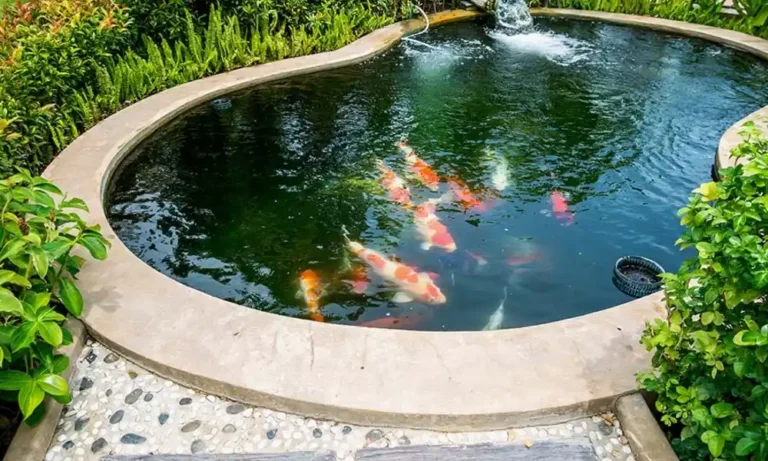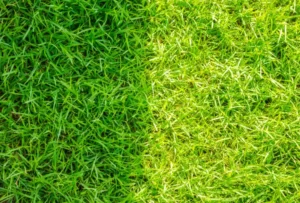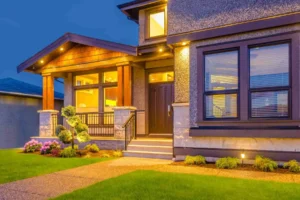How to landscape a large pond starts with understanding the unique blend of beauty and function that pond and landscaping projects can bring to any outdoor space. A well-designed pond adds visual interest, supports local wildlife, and creates a peaceful retreat right in your backyard. Whether you’re working with a small water feature or aiming to landscape a large pond, the possibilities are endless. Pond sizes and shapes vary widely—from compact round designs perfect for tight spaces to expansive natural-style ponds that mimic wild ecosystems. Proper planning is especially crucial for large pond landscaping, where considerations like water flow, surrounding vegetation, and access paths can significantly impact the final outcome. With the right approach, landscape a large pond in a way that balances aesthetics, sustainability, and long-term maintenance.
Understanding Pond Sizes and Shapes

When designing a pond, size and shape play a crucial role in how the feature blends into your landscape and supports its intended purpose—whether for aesthetics, wildlife, or relaxation. From cozy backyard water gardens to expansive estate ponds, the dimensions and contours significantly influence design choices.
Common Pond Shapes
There are several popular pond shapes to consider, each offering a unique visual impact:
- Natural: Mimics the look of naturally occurring ponds with irregular edges and gentle curves. Perfect for a relaxed, organic feel that complements wildlife-friendly gardens.
- Oval: Simple and elegant, oval ponds are easy to integrate into most landscapes and allow for efficient water circulation.
- Kidney: A favorite in residential yards, the kidney shape adds visual interest and is ideal for incorporating features like waterfalls or planting shelves.
- Formal geometric: Circles, squares, and rectangles give off an architectural, structured vibe that complements both classic and modern garden designs.
These shapes not only influence the pond’s appearance but also its maintenance and ecological balance.
Large Ponds vs. Small Ponds
Everything from the pond’s size to the amount of upkeep it requires is impacted:
- Large ponds allow for more aquatic plants, fish, and diverse landscaping features, such as bridges or islands. They offer more design flexibility but require more space and higher upkeep.
- Small ponds, while more compact and manageable, demand thoughtful design to make the most of limited space. They are ideal for urban settings or as focal points in smaller yards.
If you’re working with limited space, check out our guide on small pond landscaping ideas for inspiration and practical tips.
Landscape Integration
No matter the size or shape, successful pond design should harmonize with the overall landscape. Explore more landscape pond ideas to discover how materials, plants, and water features can enhance the aesthetic and ecological value of your yard. For more inspiration, dive into creative landscaping with ponds ideas that suit your unique outdoor space.
You should read about Commercial Landscape Maintenance.
10 Beautiful Pond Landscaping Ideas
Your outdoor area can become a calm, beautiful haven with a well-designed pond. Whether you have a sprawling backyard or a compact garden, there’s a style to suit every setting. Here’s a curated collection of landscaping with ponds ideas that blend creativity, function, and natural beauty.
1. Natural Rock Garden Pond
Incorporate boulders, pebbles, and native plants to create a pond that looks as if it’s always been part of the landscape. This landscape pond idea invites frogs, dragonflies, and birds, adding life and movement to your yard.
2. Japanese Koi Pond
Balance, tranquility, and elegance define this timeless design. Featuring koi fish, water lilies, and sculptural elements like lanterns or bridges, this style highlights harmony in pond and landscaping aesthetics.
3. Pond with Waterfall and Stream
A cascading waterfall feeding into your pond adds sound, motion, and oxygenation. Streams can wind through your garden, connecting different areas in a natural, flowing design.
4. Tropical-Themed Pond
Palm-like plants, bold foliage, and colorful blooms give your pond a lush, exotic vibe. Add bamboo fencing or tiki torches for an immersive getaway feel right in your backyard.
5. Minimalist Modern Pond
Clean lines, geometric shapes, and sleek materials like concrete or stone make this pond style perfect for contemporary homes. Underwater lighting and simple greenery complete the look.
6. Cottage Garden Pond
Soft, romantic, and brimming with charm—this pond and landscaping combo features flowering perennials, stone borders, and rustic elements that blend perfectly with informal gardens.
7. Pond with Floating Deck
Create a unique hangout spot with a wooden deck that partially floats over the pond. Ideal for small gatherings, meditation, or just relaxing by the water.
8. Pond Surrounded by Meadows
Let nature do the landscaping with native grasses and wildflowers surrounding your pond. It’s a low-maintenance, high-impact design that supports pollinators and creates a peaceful, pastoral vibe.
9. Wildlife Habitat Pond
Design with nature in mind by adding shallow zones, rocks for basking, and plants that offer shelter. This type of pond promotes biodiversity and provides a haven for local wildlife.
10. Night-Lit Pond with LED Features
Add ambiance after dark with soft LED lighting beneath the water and around the pond’s edge. Evening outdoor parties are made more dramatic and elegant with color-changing lights or solar-powered alternatives.
These landscape pond ideas prove that with the right vision, any yard can become a water-feature oasis. Whether you’re dreaming of a peaceful escape or a bold garden centerpiece, landscaping with ponds ideas like these offer plenty of inspiration to bring your outdoor vision to life.
You can also read about Landscape Installation services in Bay area.
Landscaping a Large Pond vs a Small Pond

Creating a picturesque pond can completely transform your outdoor space, but the approach can vary greatly depending on the pond’s size. Whether you’re tackling a backyard water feature or a sprawling estate-sized pond, understanding the key differences in approach, budget, and labor is essential. Here’s a breakdown of what to consider when exploring landscape pond ideas, especially if you’re planning to landscape a large pond.
Key Differences in Approach, Budget, and Labor
1. Scale of Design
- Small Pond: A small pond allows for detailed, intricate designs with features like mini waterfalls, decorative rocks, and compact aquatic plants. Every factor is within your greater control.
- Large Pond: When you landscape a large pond, the design needs to be broader and often more naturalistic. Features like peninsula walkways, multiple water zones, and aeration systems may come into play.
2. Budget Considerations
- Small Pond: Generally more budget-friendly. DIY kits are readily available, and most of the labor can be done without machinery.
- Large Pond: Expect a significantly higher investment. Excavation, professional-grade liners, aeration systems, and shoreline stabilization can quickly add up. Setting up money for continuing maintenance is also essential.
3. Labor and Tools
- Small Pond: A shovel, liner, a small pump, and some elbow grease can get the job done.
- Large Pond: Requires heavy equipment like excavators and possibly even permits. Landscaping companies may need to be hired for tasks like grading, shoreline reinforcement, and large-scale planting.
Unique Challenges with Large Ponds
When you landscape a large pond, a few unique challenges can arise:
- Erosion Control: Shorelines are susceptible to erosion, especially after rain or wind. Reinforcing banks with rocks or planting native grasses is crucial.
- Water Management: Maintaining water quality is more complex. Large ponds may need aerators or fountains to ensure healthy oxygen levels and prevent algae blooms.
- Wildlife Management: A large pond will attract more wildlife—from ducks to deer. While this can be beautiful, it also means planning for their impact on the landscape.
- Permitting and Zoning: Depending on your location, building or modifying a large pond may require environmental permits.
When to Hire Experts and When to Do It Yourself
DIY Is Great For:
- Small ponds under 1,000 gallons.
- Projects with a straightforward design and easy access.
- Homeowners with landscaping experience and basic tools.
Hire a Pro When:
- You’re working with a pond over ¼ acre.
- There are issues with drainage, slopes, or unstable soil.
- You need excavation, grading, or professional water management.
- Your design includes complex elements like bridges, patios, or irrigation systems.
Landscape Pond Ideas for Any Size
Whether you’re starting small or planning big, here are some fresh landscape pond ideas:
- Floating Islands: Add biodiversity and visual interest with floating plant platforms.
- Natural Stone Edging: Use river rock or slate to create a natural shoreline look.
- Underwater Lighting: Enhance nighttime beauty and safety.
- Rain Garden Integration: Combine a pond with a rain garden for a sustainable solution.
- Wildflower Banks: Especially for larger ponds, wildflowers can create a low-maintenance, high-impact border.
You can also read about landscaping design services in the Bay area.
Final Thoughts
Landscaping a large pond takes careful planning, the right materials, and a strong vision. From shoreline stabilization to plant selection and water features, each element plays a key role in creating a balanced, beautiful space. To landscape a large pond effectively, consider natural slopes, install proper aeration, and use native plants for low-maintenance beauty. Explore creative landscape pond ideas that match your property’s style and needs. If the project feels overwhelming, we’re here to help. Contact Lakota Design Group for expert guidance and professional results. Let’s bring your pond to life reach out today!
FAQs
What Are The Key Considerations When Landscaping A Large Pond?
When landscaping a large pond, key considerations include the size and shape of the pond, the type of plants you want to include, water flow management, accessibility, and the balance between natural beauty and maintenance. Also, consider local climate, wildlife, and any legal restrictions regarding water use or pond construction.
How Can I Make My Large Pond Look More Natural?
To make your pond look more natural, focus on incorporating native plants, rocks, and naturalistic shapes. Use varying depths to mimic natural water bodies, and add features like waterfalls, streams, or wetlands. Avoid geometric lines and instead opt for soft curves. Incorporating aquatic plants like lilies, cattails, and sedges can help too.
What Are The Best Types Of Plants To Use Around A Large Pond?
The best plants depend on your pond’s conditions, but some popular options for landscaping around large ponds include water lilies, lotus, irises, reeds, cattails, and water hyacinths for aquatic plants. For the shore, try planting grasses, shrubs, and small trees that tolerate moist conditions like willows or dogwoods.
How Can I Create A Natural-Looking Edge Around My Pond?
Use rocks or stones of varying sizes around the perimeter of your pond for a more organic appearance. Planting native shrubs, grasses, or ferns along the edges can also blend the pond with its surrounding landscape. Try to avoid a sharp, defined edge; instead, allow the plants and rocks to merge naturally.
Should I Add Fish Or Other Wildlife To My Pond For Landscaping Purposes?
Adding fish like koi or goldfish can help with natural algae control, and it also enhances the pond’s aesthetic appeal. Additionally, creating habitats for amphibians, birds, and insects can bring your pond to life. However, make sure to choose species that are appropriate for the size of your pond and won’t disrupt the ecosystem.





